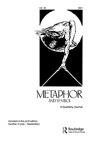《英雄之旅》与皮克斯动画中的三种隐喻
IF 3.3
3区 文学
0 LANGUAGE & LINGUISTICS
引用次数: 2
摘要
摘要尽管电影和动画有着共同的特点,但它们之间的一个根本区别是动画更自由地使用隐喻。本研究探讨了动画的这一特点,并分析了隐喻的使用如何影响长篇和短篇动画的叙事和情节结构。这项研究基于对皮克斯动画工作室制作的八部电影的叙事分析,皮克斯动画公司是一家成功的制作全长度和短长度动画电影的公司。1949年,Joseph Campbell提出了单项主义的概念,并对当代电影业产生了重大影响,这使我能够描述每一个选定例子的结构。这样一种形式化的描述情节结构的方法,反过来又使得追踪扩展隐喻对这些情节的影响成为可能。因此,本研究揭示并描述了故事背景下三种主要类型的创造性隐喻:支持性隐喻、动作形成隐喻和破坏性隐喻。似乎所有被检查的电影中都使用了支持性隐喻,而动作形成和破坏性隐喻只与短篇动画有关。研究的结论部分揭示了在长篇和短篇动画中使用这些类型隐喻的个体特征。本文章由计算机程序翻译,如有差异,请以英文原文为准。
The Hero’s Journey and Three Types of Metaphor in Pixar Animation
ABSTRACT Despite the fact that cinema and animation have common features, one of the fundamental differences between them is that animation uses metaphors much more freely. This current study explores this feature of animation and analyzes how the use of metaphors affects the narrative and plot structure of full- and short-length animation. The study is based on the narrative analysis of eight films made by Pixar Animation Studio, as a successful company that produces both full- and short-length animated films. The concept of monomyth, which was formulated by Joseph Campbell, in 1949, and had a significant impact on the contemporary film industry, allows me to describe the structure of each of the selected examples. Such a formal approach to describing the plot structure, in turn, makes it possible to trace the impact of the extended metaphor on these plots. As a result, this study reveals and describes three main types of creative metaphors in the context of storytelling: supportive, action-forming and destructive. It appears that the supportive metaphor is used in all of the examined films, while action-forming and destructive metaphors relate to short-length animation only. The individual features of using these types of metaphors in full- and short-length animation are revealed in the concluding parts of the research.
求助全文
通过发布文献求助,成功后即可免费获取论文全文。
去求助
来源期刊

Metaphor and Symbol
Multiple-
CiteScore
2.90
自引率
0.00%
发文量
23
期刊介绍:
Metaphor and Symbol: A Quarterly Journal is an innovative, multidisciplinary journal dedicated to the study of metaphor and other figurative devices in language (e.g., metonymy, irony) and other expressive forms (e.g., gesture and bodily actions, artworks, music, multimodal media). The journal is interested in original, empirical, and theoretical research that incorporates psychological experimental studies, linguistic and corpus linguistic studies, cross-cultural/linguistic comparisons, computational modeling, philosophical analyzes, and literary/artistic interpretations. A common theme connecting published work in the journal is the examination of the interface of figurative language and expression with cognitive, bodily, and cultural experience; hence, the journal''s international editorial board is composed of scholars and experts in the fields of psychology, linguistics, philosophy, computer science, literature, and media studies.
 求助内容:
求助内容: 应助结果提醒方式:
应助结果提醒方式:


